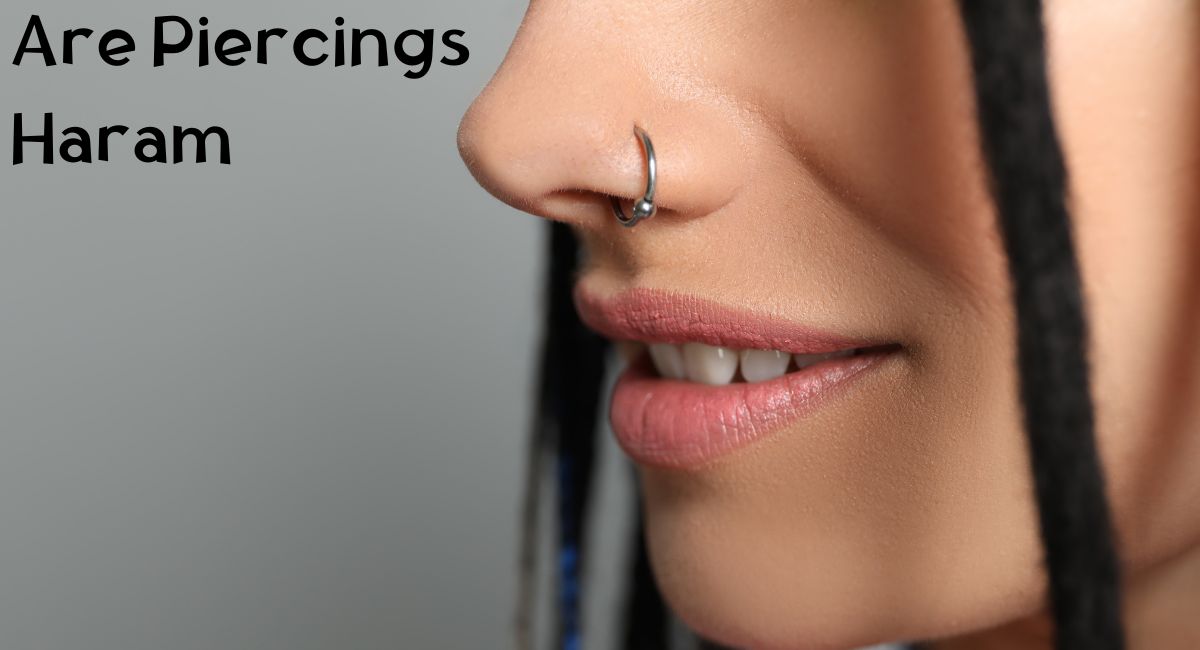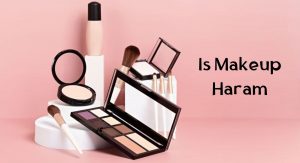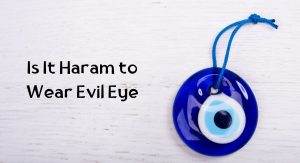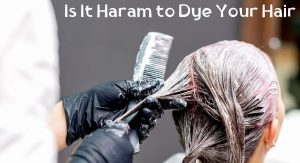Piercings, a form of body modification that has been practiced for centuries, have garnered a fair share of attention and debate within various cultural and religious contexts. In the Islamic faith, the question of whether piercings are considered “haram” (forbidden) remains a topic of discussion among scholars and practitioners alike.
This article delves into the complex issue of whether piercings are deemed permissible or prohibited in Islam, exploring the diverse viewpoints and interpretations surrounding this practice within the framework of Islamic teachings.
Key Takeaways
- Piercings in Islam are permissible as long as certain conditions are met.
- Exposing the ‘awrah and allowing non-mahrams to view it through piercings is considered haram (forbidden).
- Islamic teachings advise that piercings should not be displayed to non-mahrams and should only be shown to the husband or closely related individuals.
- Piercings that can adversely affect health are considered haram.
- Islam prohibits the imitation of customs and practices of disbelievers, including piercings associated with them.
- Men having piercings on any part of their bodies is seen as an act of imitating women and is haram.
- Ear piercing for women is considered halal (permissible), but generally haram for men.
- Nose piercing is generally permissible for women, but discouraged for men.
- Fake piercings may be acceptable if they align with Islamic guidelines for modesty and identity.
- Belly piercings are generally considered haram, but there is some debate among scholars.
- Tongue piercing is haram in Islam due to potential harm and its association with non-Muslim customs.
Are Piercings Haram
Piercing in Islam is a subject that requires careful consideration and adherence to certain conditions. While the ruling on piercing may vary depending on the specific circumstances, the general understanding is that piercing is permissible as long as certain conditions are met.
Adornment without ‘awrah exposure
In Islamic teachings, the concept of ‘awrah, or the parts of the body that should be covered, is considered crucial. Both the Qur’an and Sunnah emphasize the importance of covering the ‘awrah for both men and women. The ‘awrah of a woman in Islam generally includes her entire body except for the face, hands, and feet. Exposing the ‘awrah is viewed as unlawful in Islam.
Regarding piercings, if obtaining a piercing requires uncovering the ‘awrah and allowing non-mahrams (those who are not closely related) to view it, then this action is considered haram (forbidden) in Islam.
This ruling applies regardless of the gender of the non-mahram. The significance of this ruling lies in the emphasis on maintaining modesty and avoiding actions that could lead to immodesty or temptation.
Additionally, Islamic teachings advise that adornments like piercings should not be displayed to non-mahrams. They should be shown only to the husband or mahrams (those closely related) if the piercing is in a location that is permissible for them to see, such as the ear or nose. This guidance aligns with the broader Islamic principle of modesty and the emphasis on not imitating those who are considered evildoers or immoral according to Islamic beliefs.
Adverse health effects
Islam emphasizes that any act that potentially leads to health hazards is strictly forbidden, regardless of any perceived or imagined benefits. This principle clearly applies to body piercing, as the health risks associated with certain types of piercings are significant enough to warrant declaring the practice as forbidden.
The underlying concern is that the potential health complications outweigh any possible benefits of adornment through piercing.
Therefore, piercings that have adverse effects on health, either immediately or in the long term, are not permissible. This includes piercings in areas such as the lip or tongue, which can lead to complications affecting oral health.
Imitation of immoral customs
In Islamic teachings, there is a clear prohibition against imitating the customs and practices of disbelievers, especially those that are unique to their religious or cultural practices.
This includes aspects of their religion, dress, hairstyles, eating habits, and other distinctive characteristics. The intention behind this prohibition is to maintain a clear distinction between Islamic and non-Islamic customs and values.
The Prophet Muhammad (peace be upon him) explicitly warned against the imitation of other peoples, stating, “Whoever imitates a people is one of them.” This Hadith underscores the importance of maintaining a distinct Islamic identity and avoiding actions that could imply endorsement or acceptance of non-Islamic values and customs.
In the context of body piercing, if a particular style or form of piercing is predominantly known among disbelievers, evildoers, promiscuous people, or sinners, and is recognized as a symbol or practice unique to them, then it would not be permissible for Muslims to adopt that style of piercing.
Even if a Muslim does not intend to imitate disbelievers, engaging in practices that are strongly associated with them is not permissible.
Gender-specific considerations
It is haram (forbidden) for men to have piercings on any part of their bodies, as this is seen as an act of imitating women. This prohibition is rooted in the teachings of the Prophet Muhammad (peace be upon him), who cursed effeminate men (those who imitate women) and masculine women (those who imitate men).
Piercing the ear for the purpose of wearing earrings is particularly highlighted as an imitation of women’s adornment and is not permissible for males. This falls under the broader Islamic principle that discourages men from adopting practices that are traditionally and culturally associated with women.
If a piercing meets all the conditions mentioned above, and it does not involve uncovering the ‘awrah or imitating immoral customs, then it can be considered permissible in any part of the body as long as adorning that part is a well-known custom in society.
This is based on the principle that women are allowed to adorn themselves, and there is evidence to suggest that piercing a little girl’s ears to put earrings is permissible.
Therefore, by analogy, piercing other body parts is permissible as long as it does not violate the aforementioned conditions. The Hanafi and Hanbali schools of thought also permit certain types of piercings for adornment purposes.
Frequently Asked Questions
1. Can muslim men get piercings?
In Islam, earrings and other forms of adornment, such as bracelets and anklets, are generally considered haram for men. This is because earrings and bracelets are known as forms of women’s adornment, and Islam does not permit men to imitate women or make themselves look like them. The Prophet Muhammad (peace and blessings of Allah be upon him) said, “Whoever imitates a people is one of them”.
2. Are belly piercings haram?
Belly piercings, also known as navel piercings, are generally considered haram in Islam. This is because they involve making a permanent change in Allah’s creation and can have associated health risks. According to Islamic teachings, the Prophet Muhammad (PBUH) clearly said no to making any changes to the body, including piercing. However, there is a debate on this issue, with some scholars permitting belly piercings under certain conditions. For example, Ibn Qudamah (may Allah have mercy on him) stated that wearing a belly button ring is permissible as long as it is customary among women in that country and does not cause harm.
3. Are fake piercings haram?
Regarding fake piercings, the Islamic view would likely depend on how closely they resemble the real ones and whether they adhere to the general principles and conditions outlined for permissible adornments. If fake piercings are used in a way that aligns with Islamic guidelines for modesty and identity, they may be considered acceptable. However, if they imitate non-Islamic practices or are deemed excessive or inappropriate, they might be discouraged or deemed impermissible.
4. Is it haram to have a nose piercing?
Nose piercing is generally not considered haram (forbidden) in Islam for women. There is no explicit prohibition in the Quran or Hadith that forbids women from piercing their noses. Many Islamic scholars state that it is permissible, especially if it is a well-known beauty habit in the woman’s locality or country. For men, however, there is no clear guidance in the Quran or Hadith, but Islamic scholars have generally frowned upon nose piercing for men.
5. Is it haram to get a tongue piercing in Islam?
Tongue piercing is considered haram in Islam. This ruling is based on the understanding that tongue piercing can be harmful and cause diseases, and Islam forbids actions that can harm oneself. Additionally, it is viewed as a form of mutilation and is not considered an adornment for a decent individual. It is also seen as a custom borrowed from non-Muslims and not an Islamic practice.
6. Is ear piercing a sin?
Ear piercing for women is considered halal (permissible) in Islam. It is seen as a form of adornment that was practiced by pious women in the past. However, for men, ear piercing is generally considered haram as it is viewed as an act of feminization and is against the Islamic perspective of male adornment.








